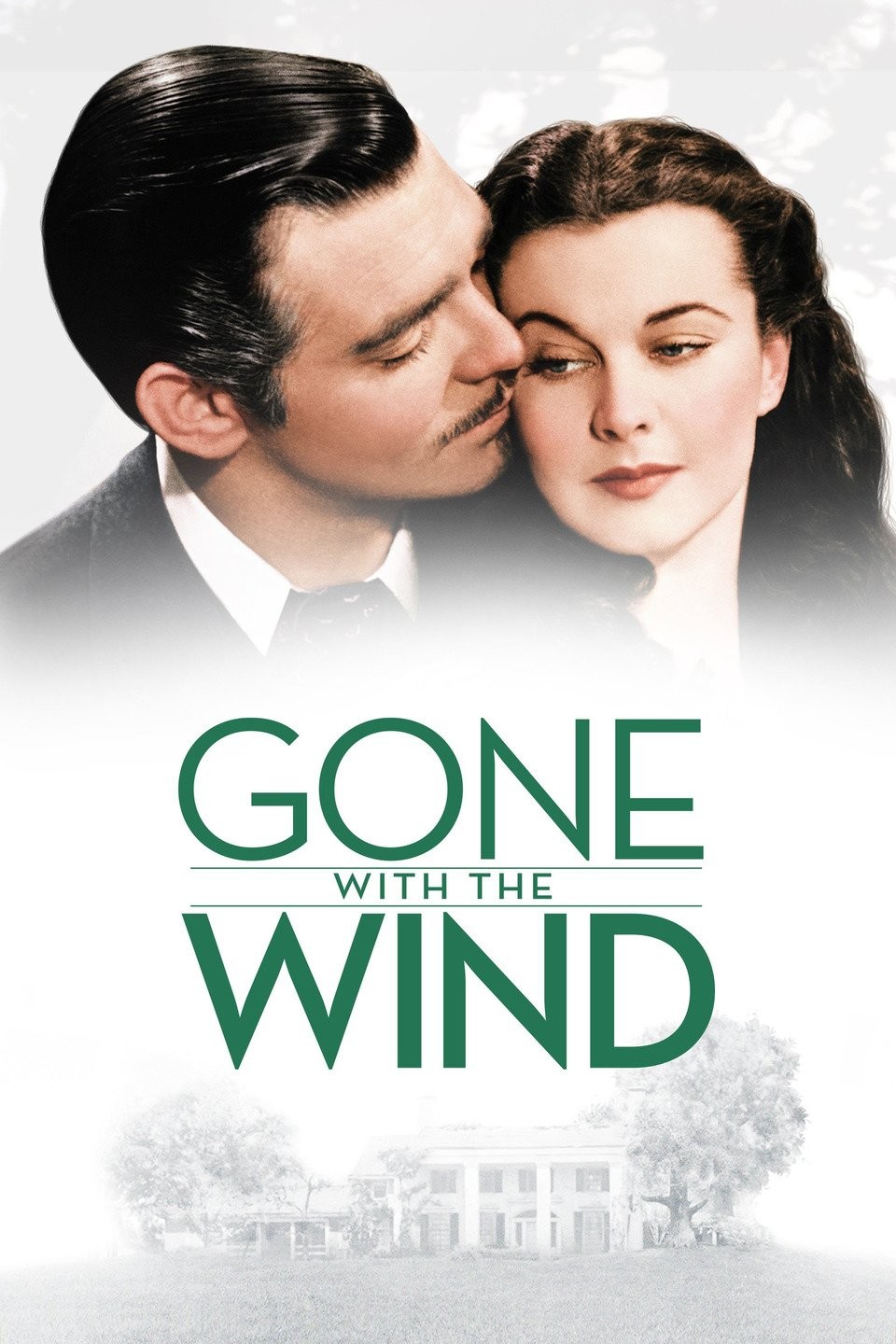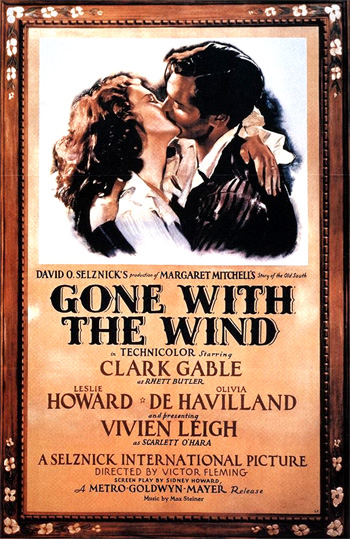Could a film, released over eight decades ago, still captivate audiences and resonate with the complexities of the human experience? **Indeed, Gone with the Wind remains a cinematic behemoth, a testament to the enduring power of storytelling and a cultural touchstone that continues to spark conversation and debate.**
The year was 1939. The world was on the precipice of another global conflict, but in Hollywood, a different kind of drama was unfolding. David O. Selznick, a producer known for his ambition, had secured the rights to Margaret Mitchell's epic novel, Gone with the Wind. He envisioned a film of unprecedented scale, a sweeping saga of love, loss, and survival set against the backdrop of the American Civil War and Reconstruction era. The project was a gamble, a financial undertaking of immense proportions, but Selznick was a man who thrived on challenges. His goal was not merely to adapt a book; it was to create a cinematic masterpiece, a film that would transcend generations.
The film's narrative unfolds in the heart of the American South, a region consumed by the flames of war. At the center of the story is Scarlett O'Hara, a character as complex and captivating as the era in which she lives. Played by Vivien Leigh, Scarlett is a Southern belle, known for her beauty and her unwavering spirit. She navigates a world turned upside down by war, facing loss, hardship, and the shifting tides of social change. Her journey is marked by resilience, determination, and a relentless pursuit of survival.
The film's grandeur extends beyond its narrative. The production was a meticulous undertaking, demanding the creation of elaborate sets, costumes, and special effects. The burning of Atlanta sequence, for instance, was a feat of technical innovation, a visual spectacle that continues to impress. The cinematography, lighting, and musical score all combined to create a rich and immersive cinematic experience.
Beyond the epic scope and visual splendor, Gone with the Wind delves into profound themes. It explores the nature of love and loss, the devastating impact of war, and the complexities of societal change. The film examines the romanticized vision of the Old South, exposing its inherent flaws and the injustices upon which it was built. It also portrays the resilience of the human spirit in the face of adversity, showcasing the enduring power of hope and the will to survive.
The casting of Gone with the Wind was a pivotal aspect of the film's success. David O. Selznick understood that he needed actors who could embody the complexities of the characters and bring their stories to life. He sought actors who could convey not only their characters' outward appearances but also their inner turmoil and resilience.
Vivien Leigh, a relatively unknown British actress at the time, was ultimately cast in the role of Scarlett O'Hara. Her performance was nothing short of iconic. Leigh's portrayal captured Scarlett's beauty, her vanity, her selfishness, and her unwavering determination. She embodied the character's evolution, allowing the audience to witness her transformation from a spoiled Southern belle to a woman hardened by war and driven by the need to survive. Her portrayal of Scarlett O'Hara is still considered one of the greatest performances in cinema history.
Clark Gable, a Hollywood legend, was cast as Rhett Butler, the roguish and charismatic anti-hero. Gable's performance was magnetic, a perfect blend of charm, wit, and hidden vulnerability. His portrayal of Rhett, a man who defies convention and operates on his own terms, offered a compelling counterpoint to Scarlett's more conventional Southern ideals. Their on-screen chemistry was electric, adding to the film's romantic appeal.
Olivia de Havilland played Melanie Hamilton, the gentle and kind-hearted cousin of Ashley Wilkes. Her portrayal of Melanie, a woman of unwavering loyalty and grace, provided a contrast to Scarlett's more volatile personality. De Havilland's performance brought a sense of warmth and compassion to the film, offering a nuanced portrayal of a character often overshadowed by others.
Leslie Howard brought a sense of delicate sensitivity to the role of Ashley Wilkes, the man that Scarlett O'Hara deeply desires but cannot have. His portrayal captured Ashley's complexities, his romanticism, and his underlying weakness. Howard's performance added depth to the love triangle that drives a significant portion of the narrative.
The film's director, Victor Fleming, was tasked with the challenge of translating the expansive novel to the big screen. Fleming's experience allowed him to harness the technical and narrative elements of the story, creating the memorable adaptation we know today. He worked closely with the cast and crew to bring the sweeping story to life.
The impact of Gone with the Wind extended far beyond its initial release. The film broke box office records, becoming a cultural phenomenon that influenced fashion, language, and popular culture. Its success ushered in a new era of epic filmmaking and helped to establish Hollywood as the center of the film world.
The film garnered numerous awards, including eight Academy Awards, solidifying its place in cinematic history. The accolades recognized the film's technical achievements, its performances, and its enduring appeal. The film's significance was also recognized over time as an important work of art and has secured its place in the National Film Registry of the Library of Congress.
Despite its critical acclaim and enduring popularity, Gone with the Wind is not without its detractors. The film has been criticized for its romanticized portrayal of the Old South, its stereotypical depiction of African Americans, and its downplaying of the injustices of slavery. These criticisms have led to ongoing debates about the film's cultural significance and its enduring relevance.
However, despite these criticisms, the film continues to be studied, analyzed, and debated. Its enduring popularity speaks to its power as a work of storytelling. The film's ability to provoke discussion, to spark conversations about history, race, and identity, ensures its place in the cultural landscape.
The film is more than just a historical drama; it is a cultural artifact, a reflection of its time, and a work of art that continues to resonate with audiences of different backgrounds. Gone with the Wind remains a testament to the enduring power of cinema and the enduring appeal of epic storytelling.
Here’s a closer look at the actors who brought these iconic characters to life:
Vivien Leigh
| Full Name | Vivian Mary Hartley |
| Born | November 5, 1913 |
| Died | July 8, 1967 |
| Place of Birth | Darjeeling, British India |
| Known For | Portraying Scarlett O'Hara in Gone with the Wind, Blanche DuBois in A Streetcar Named Desire |
| Career | Stage and film actress. Won two Academy Awards for Best Actress. |
| Awards & Recognition | Two Academy Awards for Best Actress, a Tony Award, and a BAFTA Award. |
| Spouse | Laurence Olivier (m. 1940–1961), Herbert Leigh Holman (m. 1932–1940) |
| Personal Life | Known for her beauty, talent, and struggles with bipolar disorder. |
| Reference | Britannica |
Clark Gable
| Full Name | William Clark Gable |
| Born | February 1, 1901 |
| Died | November 16, 1960 |
| Place of Birth | Cadiz, Ohio, USA |
| Known For | Portraying Rhett Butler in Gone with the Wind |
| Career | Film actor known as The King of Hollywood |
| Awards & Recognition | Academy Award for Best Actor (1934) |
| Spouse | Kay Williams (m. 1955–1960), Ava Gardner (m. 1954–1955), Carole Lombard (m. 1939–1942), Ria Langham (m. 1930–1939) |
| Personal Life | Known for his charm and numerous marriages |
| Reference | Britannica |
Olivia de Havilland
| Full Name | Olivia Mary de Havilland |
| Born | July 1, 1916 |
| Died | July 26, 2020 |
| Place of Birth | Tokyo, Japan |
| Known For | Portraying Melanie Hamilton in Gone with the Wind |
| Career | Film actress |
| Awards & Recognition | Two Academy Awards for Best Actress |
| Spouse | Pierre Galante (m. 1955–1979) |
| Personal Life | Known for her legal battle against Warner Bros. |
| Reference | Britannica |
Leslie Howard
| Full Name | Leslie Howard Steiner |
| Born | April 3, 1893 |
| Died | June 1, 1943 |
| Place of Birth | London, England |
| Known For | Portraying Ashley Wilkes in Gone with the Wind |
| Career | Stage and film actor and director |
| Awards & Recognition | Academy Award for Best Actor nomination (1932) |
| Spouse | Ruth Evelyn Martin (m. 1916–1943) |
| Personal Life | Known for his work during World War II. Died in a plane crash over the Bay of Biscay. |
| Reference | Britannica |

![Gone With The Wind [Cast] Photo](https://www.statesidestills.com/prodimages/gone_with_the_wind_cast_64674l.jpg)

